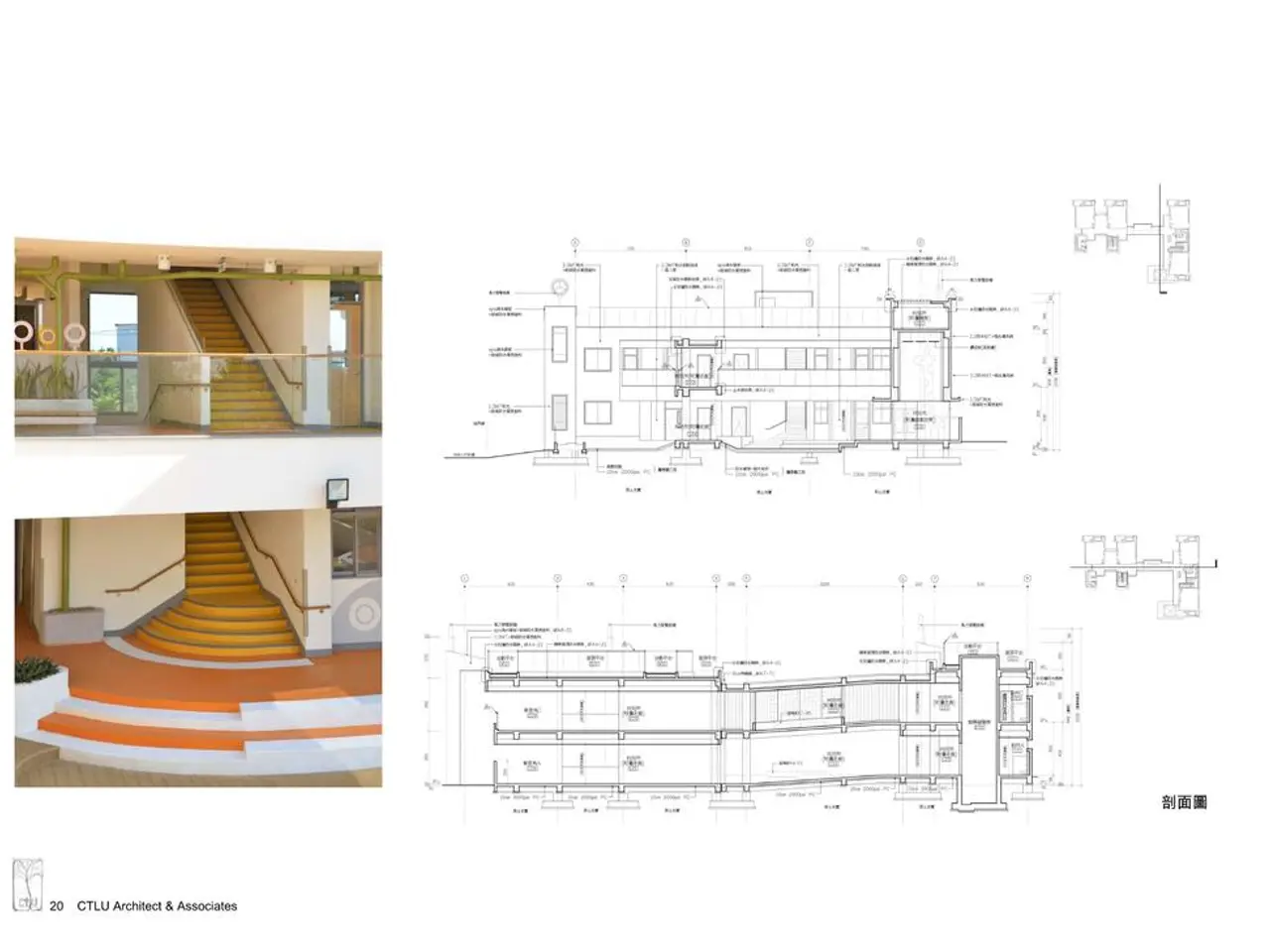Infill development plot: A construction site promising ideal conditions for building your ideal home in the year 2025?
In the realm of property development, infill plots often go unnoticed but hold immense potential for transformative projects. These small, often overlooked sites can be turned into great places to live with clever design input. However, they come with their own set of challenges.
Accessibility is a key consideration when dealing with infill sites, as they are often narrow and providing adequate access can be difficult.
Location is another crucial factor. When assessing an infill plot, consider the types of houses on either side of the site and in the area generally. The value of an infill plot will reflect what the finished house is worth, less the cost of development. Focus on what's most important to you, such as location, plot size, or specific features.
Strategies for finding infill plots include targeting off-market opportunities, using specialist plot-finding websites like Plotfinder.net, getting out and exploring, spreading the word, considering land you already own, networking with builders and professionals, attending property auctions, looking for properties for sale with large gardens, studying maps, and using the council's planning portal.
However, developing infill plots comes with common challenges. High purchase costs are a significant hurdle, as infill land is generally more expensive than raw or rural land due to its prime location and development potential.
Planning and regulatory hurdles are also prevalent. Self builders often face complex planning requirements, including increasingly strict environmental and conservation regulations. This is especially challenging near protected areas like greenbelts.
Site constraints are another common challenge. Urban infill plots may be fragmented by existing infrastructure (roads, utilities) which can affect design flexibility, walkability, aesthetics, and construction feasibility. There may also be issues with soil stability, especially in areas prone to seismic risk or other environmental vulnerabilities.
Competition is another factor to consider, as infill land is in high demand. Self builders may compete against established developers and investors, driving up prices and making acquisition harder.
Infrastructure adaptation and costs can also pose a challenge. Although infrastructure often exists, adapting or upgrading it to new builds can be costly or complicated.
Design limitations are tied to plot size and shape. Infill plots typically have smaller sizes, irregular shapes, or restrictive covenants, limiting design options for self builders wanting custom homes. Builders often tend to repeat common mistakes, especially if they try to maximize yield without accommodating local context.
Longer timelines and patience are required when navigating urban zoning, permitting, ecological requirements, and potential delays.
Despite these challenges, most councils allow for infilling and small-scale developments within towns and villages. Infill plots are usually already set up with essential services such as water, electricity, internet, and access to the main highway, making them less costly for self-builders to develop.
Privacy issues rarely affect whether a plot can be built on, but they do affect how windows must be carefully positioned to avoid overlooking. The perfect infill plot is rare and requiring compromise is essential. Infill developments can face challenges, such as getting neighbors on board with plans, addressing planning permission issues, dealing with odd shapes and sizes, accessibility issues, potential restrictive covenants, and establishing the financial viability of the project.
However, infill developments are usually located in established settlements, such as villages and towns, and present less risk from a planning perspective compared to greenfield or brownfield sites. In planning terms, infill development refers to turning unused or vacant pieces of land in developed areas into something useful.
In summary, the key challenges are higher land costs, stringent planning/conservation regulations, site-specific environmental and infrastructure constraints, competition, and design limitations tied to plot size and shape, all of which require careful planning and flexibility from self builders undertaking infill projects.
- In the realm of property development, infill plots, though often overlooked, carry significant potential for transformative projects, especially with intelligent design input.
- When assessing an infill plot, one must consider factors like the location, focusing on aspects such as plot size, specific features, and the surrounding neighborhood.
- Strategies for finding infill plots include seeking off-market opportunities, utilizing plot-finding websites, exploring, networking, attending auctions, and studying maps.
- Developing infill plots comes with common challenges, such as high purchase costs, planning and regulatory hurdles, site constraints, competition, infrastructure adaptation and costs, and design limitations.
- Site constraints often include existing infrastructure, soil stability issues, and odd shapes or sizes, which can affect design flexibility and construction feasibility.
- Longer timelines and patience are required when navigating urban zoning, permitting, ecological requirements, and potential delays in infill development projects.
- Despite these challenges, most councils allow for infilling and small-scale developments within towns and villages, as infill plots usually come with essential services and present less risk from a planning perspective.
- Infill developments, though requiring compromise, are usually located in established settlements, offering the advantage of fewer planning issues compared to greenfield or brownfield sites and, in planning terms, refer to turning unused or vacant pieces of land in developed areas into something useful.




